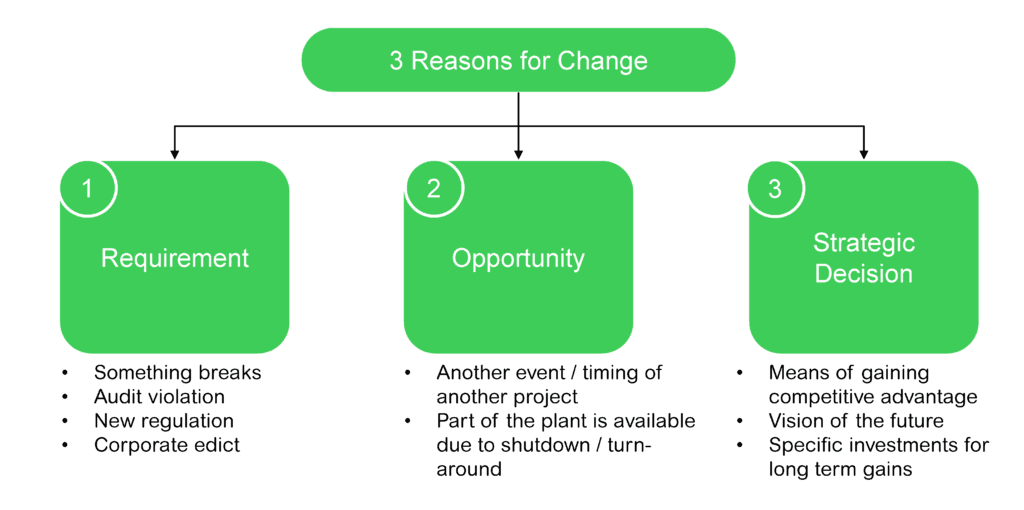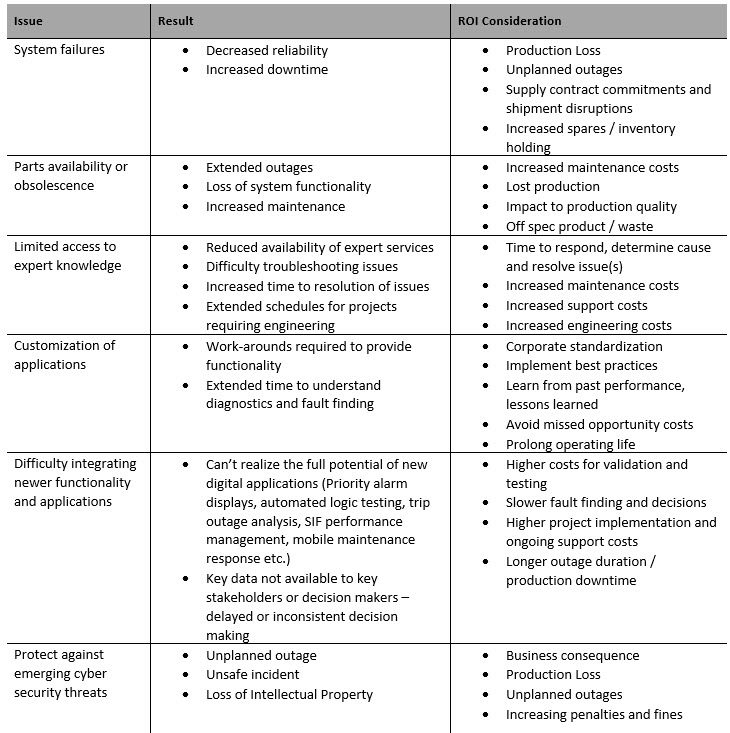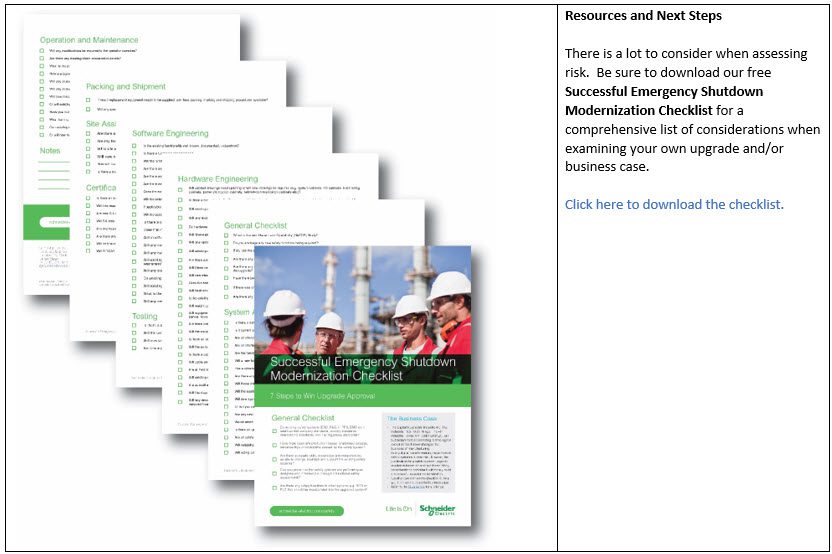Modernizing Emergency Shutdown Systems Step 5: Define a Winning ROI
Credit to Author: Steve Elliott| Date: Mon, 29 Jul 2019 13:00:08 +0000
 The Digital Revolution. Industry 4.0. The Industrial Internet of Things. The 4th Industrial Revolution. Call it what you will but today’s fast-accelerating technological evolution has forever changed the business of manufacturing.
The Digital Revolution. Industry 4.0. The Industrial Internet of Things. The 4th Industrial Revolution. Call it what you will but today’s fast-accelerating technological evolution has forever changed the business of manufacturing.
In any digital transformation, investment in safety systems is essential. However, the justification for a safety system upgrade is seldom based on a single factor. Many considerations combine to ultimately build a successful case for modernization. I once presented a manager with two choices: Upgrade the legacy safety system or wait until something happens and go out of business. I know that sounds a bit extreme, but it’s not always possible to restart operations after an outage!
This post will help you define a winning ROI, a critical step in building an effective business justification and win that all-important approval to successfully secure money and resources for your new safety model.
The Only Good Reason to Upgrade
The only good reason to upgrade a safety system is because it achieves one or more tangible business goals. The exact goals will vary from company to company but, in all cases, it’s important to clearly identify and quantify your goals, and make them the most significant criteria in selecting a replacement system. Some examples:
- Reduction in lifetime cost
- Return on investment
- Internal rate of return
- Net present value
- Risk / Cost of a failure
- Cost of doing nothing vs. cost of upgrading
- XXX mt/day * $/mt * XX days = $ M sales loss
- XXX klb/day * $/klb * XX days = $ M margin contribution loss
- Raw material consumption loss = XXX mt
- Non-compliance contract to customers
- Potential permanent customer loss
- ROI of tangibles / intangibles
- Reduction in insurance premiums
The requirement to upgrade any safety system is primarily driven by three factors:

In many operating companies, safety system upgrades are part of a larger vision or initiative, such as: standards compliance, periodic reassessment of the hazards such as a HAZOP every 5 years, part of a plant modification or expansion, facility siting, etc. Re-HAZOP often identifies additional risks and requires additional risk reduction methods or new safety functions so this may force the upgrade.
When safety system upgrades are part of larger projects, the challenges of the justification process are often reduced. However, when the safety system upgrade is not the focal point of the project, resources can quickly get consumed by the bigger project and may be used to offset or balance other parts of the project. Scope may be reduced. Budget may be reallocated. Therefore, it’s essential to keep the safety system ROI front and center.
Some common Safety System ROI considerations include:

The Complexity Factor
While finding capable resources can be a challenge in the late life of the safety system, losing valuable in-house resources with expert knowledge of the process and the application over time can often cause more difficulties for operating companies.
In many older systems, work arounds, customizations or bespoke programming was often required to achieve the desired functionality. My experience has shown that many of these are poorly documented, and worse still, the expertise and in-depth knowledge is limited to a few individuals. When these scarce resources are no longer available (as they retire, change jobs, etc.), efficiency is reduced, and the costs of safety system related activities are increased. For example, trouble shooting, starting up units post trip, making modifications and expanding systems can take longer, leading to inefficiency and extended periods of down time.
TIP: When estimating the business case justification, consider using a complexity factor as a multiplier to the ROI calculation. For example, assume an efficiency factor of 1.0 if expert resources and good as-built documentation are available. For less experienced or well documented systems, assume a factor of 0.75, which equates for a 25% reduction in efficiency and can be applied to cost, schedule and resource. Make sure that this is clearly shown as an estimate.
For example, compare the Efficiency X Age of System X Application Complexity of the old and new system:
A 0.75 x 15-year-old system using DOS based programming x complex turbo machinery application versus 1.00 x 5-year-old system using IEC61131 programming tools x standard TMC function block libraries.
Using historical data is also essential to understand the total costs of maintaining an older system. For the upgrade ROI calculation, consider:
- The historical costs of unexpected outages, lost production, off-spec product or deficiencies caused by operator error.
- The historical costs of periodic revalidation application logic
- The historical costs of the time and effort to produce post trip reports and associated analysis as well as the length of outage experienced
Run the “Pain Equation”
Fundamentally, it’s about the cost benefit of change. I was told years ago by a customer that the justification to upgrade is a simple equation that boils down to this:
PAIN_1 > PAIN_2
When “PAIN_1 (production risk) of doing nothing multiplied by the remaining life of the plant (years)” is greater than “PAIN_2 (cost) of the upgrade including production losses resulting from upgrade transition” it’s time to upgrade.
Here are some examples:
Where the upgrade makes sense:
- Production loss of $2M per year is directly linked to obsolete equipment x 15-year plant life = $30M = PAIN_1
- Upgrading system costs $5M in hardware/services + $10M in lost production during transition = $15M = PAIN_2
Where the upgrade doesn’t make sense:
- Production loss of $2M per year is directly linked to obsolete equipment x 5-year plant life = $10M = PAIN_1
- Upgrading system costs $5M in hardware/services + $10M in lost production during transition = $15M = PAIN_2
In the next post, we will take a closer look at Step 6 – Focus on the Benefits.
Did you miss the first posts in this series? Click below to read them now.
Modernizing Emergency Shutdown Systems: 7 steps to approval
Modernizing Emergency Shutdown Systems: Step 1 Funding Approach
Modernizing Emergency Shutdown Systems: Step 2 Build Consensus
Modernizing Emergency Shutdown Systems: Step 3 Decide When
Modernizing Emergency Shutdown Systems: Step 4 Use a Risk Approach
For further reading:
Download IIoT for Process Safety White Paper
The post Modernizing Emergency Shutdown Systems Step 5: Define a Winning ROI appeared first on Schneider Electric Blog.

